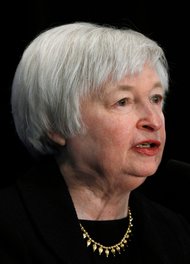Stocks on Wall Street closed slightly higher Friday following a slew of mixed earnings reports, and despite fears that an overhaul of China’s industry could slow down the world’s second-largest economy.
By the end of trading the Standard Poor’s 500-share index and the Dow Jones industrial average were up less than 1 percent, and the Nasdaq composite was 0.2 percent higher.
Amazon.com reported a loss for the second quarter, but shares rose 2.9 percent.
Beijing has ordered companies to close factories in 19 industries where overproduction has led to price-cutting wars, affirming its determination to push ahead with a painful makeover of the economy. That move followed weak manufacturing data on Wednesday. China’s Shanghai Composite dropped 0.5 percent to 2,010.85.
In Europe, Britain’s FTSE 100 index ended the day down 0.5 percent to 6,554.79 points, while Germany’s DAX fell 0.7 percent to 8,244.91.
France’s CAC 40 bucked the trend, rising 0.3 percent to 3,968.84. It was bolstered by a 3.6 percent rise in the shares of LVMH, the luxury goods maker, after it reported higher earnings. Meanwhile, shares in French media company Vivendi were up 0.6 percent after it agreed to sell most of its majority stake in video games maker Activision.
Over all, trading has been quiet in recent days as a lot of people wait for next week’s meeting of the Federal Open Market Committee in the for guidance on when the central bank will start reducing its monetary stimulus.
Since late last year, the Fed has been buying $85 billion in Treasury and mortgage bonds a month — a move that has kept long-term rates near record lows and supported economic recovery.
In Asia, Japan’s Nikkei 225 index fared worst on Friday, closing 3 percent lower at 14,129.98, due to a big rise in the yen, which risks making the country’s exports less competitive on international markets.
Japan on Friday said consumer prices rose in June for the first time in more than a year, an early sign that the government’s stimulus policies are working. While that is a promising sign in the long-term, the signs of inflation suggest interest rates could eventually increase — higher rates tend to strengthen a national currency. The dollar was down 0.9 percent against the yen, at 98.34 yen.
Elsewhere in the region, Hong Kong’s Hang Seng gained 0.3 percent and Australia’s SP/ASX 200 rose 0.1 percent.
In energy trading, benchmark crude was down 79 cents at $104.70 a barrel in electronic trading on the New York Mercantile Exchange.

Article source: http://www.nytimes.com/2013/07/27/business/daily-stock-market-activity.html?partner=rss&emc=rss

